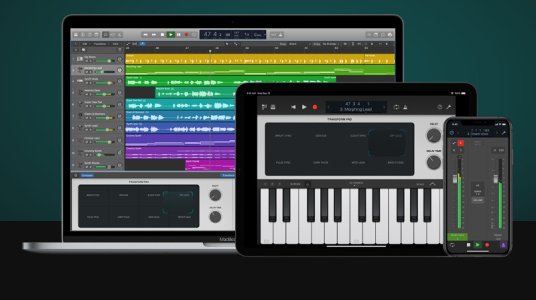
Industry best practices in music production requires at least basic knowledge of Digital Work Stations (DAW) in order to streamline the mechanics of modern digital music production. If musicians are not familiar working with DAWs, they lose out in collaborative opportunities.
By learning how to apply fundamentals of Logic Pro X, musicians are able to use a commercially standard DAW platform to compose, arrange, record and produce digital content. This course aims to provide the fundamental skills on which they can build upon and contextualise for their specific production needs.
The course also aims at enabling musicians to make appropriate audio recording choices that dovetail into the functions and capabilities of a DAW, thus integrating audio recording seamlessly into a digital music production. Such choices include selecting appropriate effect plug-ins for various instruments, turning audio recordings into editable audio tracks on a DAW, performing basic audio-engineering on the audio production.
Who Should Attend
-Music Instructors
-Composers
-Performers
-Content Creators
Course Outline
LU 1: Identify the components of a DAW and to connect them together
Understanding the uses of each components of a DAW and how to connect them together
-Mac Computer
-Logic Pro X Software
-Audio Interface
-MIDI controller
LU 2: Demonstrate the use of common commands and functions for the operations of Logic Pro X
-Creating a new Logic Pro X project file
-Setting the Tempo, Time Signature, Key Signature, Sample rate
-Naming and saving the file
LU 3: Create Audio and Software Instrument tracks/ Create new audio instrument track
-Setting the input of the track to correspond to the audio interface
-Setting the gain on the mic preamp
-Activate recording on the track and record the audio
-Create a new software instrument track
-Choose an appropriate Software Instrument
-Play on the MIDI controller and record the data
LU 4: Identify the different uses for the different types of microphones and understand basic microphone techniques
-Understanding the differences and characteristics between condenser and dynamic microphones, pick-up patterns, large and small condenser microphones
-Performing basic microphone techniques to record vocals and instruments
LU 5: Perform recording and editing on Audio tracks
-Record a musical performance with the microphone
-Perform editing, flex tune and flex time processing on the tracks
LU 6: Perform recording and editing on MIDI tracks
-Record a musical performance on the MIDI controller
-Editing the performance in the Piano Roll Editor
LU 7: Apply basic Equalisation and Compression to the tracks
-Fundamentals of equalisation and compression
-Selecting and inserting an audio plug-in into the track
LU 8: Perform basic mixing and balancing of tracks
-Organising the track layout
-Placement of instruments in the sound field
-Procedure for balancing tracks
-Setting the required loudness unit of the output
LU 9: Export the final mix to various file formats
-Understanding the bounce menu and its functions
-Introduction to the use of various audio file formats. i.e. wav, mp3, 16/24bit rate, 44.1/48k sample rate
-Bounce the final file and checking it
Mode of Assessment
Multiple choice questions (MCQ)
Course Duration
4 days
NTUC Members after UTAP Funding: $79.80
Non-NTUC Members: $149.80
*Terms & Conditions apply
Trainees will receive a certificate of completion after completion of the courses.
Please take note that you would need to apply and received a Letter of Eligibility (LOE) from NTUC’s e2i before applying/registering for any courses.
Apply for Letter of Eligibility:
https://e2i.com.sg/sep2020-form
Please click http://www.e2i.com.sg/SEP2020 for more information
For enrolment of classes, please contact 8228 8936.
https://courses.ntuclearninghub.com...ndamentals-of-logic-pro-x-in-music-production
